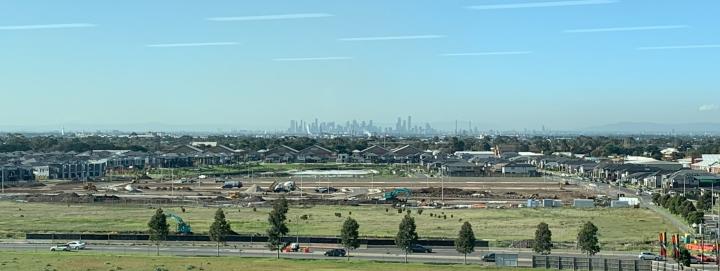
By Dr Aaron An
The concept of "smart cities" guides urban development in the current digital era and presents innovative possibilities for governance and growth. The swift advancement of technology such as the Internet of Things (IoT), big data analytics, cloud computing, and artificial intelligence (AI) has given all levels of government prospects to harness digital transformation to enhance urban liveability, sustainability, and operational efficacy. Today, we discuss the importance of smart cities and digital transformation and how they affect our lives by improving government decision-making and helping us achieve the goals of sustainable development.
Data-driven management: addressing challenges in growth areas
Rapid population growth in some metropolitan areas is a key factor driving the development of smart cities. The expansion of urban boundaries and the increase in population in these regions have put much pressure on governments. For example, in the western suburbs of Melbourne, some municipalities’ populations have more than doubled in the last 15 years. To meet the demands of the growing population, the governments need to build new infrastructures, such as schools, community centres, kindergartens, libraries, sports fields, parks, roads, and hospital facilities, to provide residents with basic services.
There is a saying, "If you can't measure it, you can't manage it." This is particularly true in the context of growth areas. If we don't have the data or if the data has been outdated for years, how can we expect the decision-makers to make the best decisions?
Data-driven decision-making, predictive analysis, and active intervention can help our governments manage the cities more rationally and efficiently. The insights made available by smart city and digital transformation technologies can help governments select the best location for community infrastructure sites, and accurately calculate the current and predict the future scale of services that will need to be provided. They can also help us solve emerging challenges and optimise allocating funding and resources.
The pandemic has taught us a lot
The global pandemic demonstrated how crucial it is for governments to be digitally resilient and flexible to respond to crises and deliver essential services. As we witnessed firsthand, smart city related digital technologies were key to ensuring government operations and services during that time.
Since we have entered the post-epidemic economic recovery stage, it is important to have the funding and investment in smart city development and digital transformation. Improving cities' digital capabilities will help improve operational efficiency and flexibility, help governments at all levels respond to new challenges, and ensure we can continue providing residents with the basic community services they need in both quality and quantity.
Helping to achieve net zero by 2050
Achieving net zero emissions by 2050 is a challenge for everyone. We must actively work towards this target. With the vast majority of the population living in urban areas, our cities should follow a low-carbon, sustainable development path by prioritising mixed-use and transit-oriented development and promoting pedestrian-friendly communities, reducing dependence on cars, to minimise carbon footprint. Smart cities provide us with an important framework for meeting this challenge, improving energy efficiency and promoting renewable energy. Related works such as smart transport systems, smart building solutions, smart waste management solutions, and well-planned green spaces they bring can help us reduce carbon emissions and energy consumption, helping us to a more sustainable future.
Fostering a collaborative innovation ecosystem
Smart city development and digital transformation are not just about the simple introduction of new technologies. The focus is on establishing a culture and mechanism of innovation, collaboration and citizen participation, working with all stakeholders to identify problems and explore solutions to ensure that our smart city plans truly meet the needs of communities and reflect equity and inclusion. In this process, we must also establish effective governance frameworks, strengthen privacy protections and improve data security so that all our stakeholders have greater confidence in our government and related institutions.
To fully realise the potential of smart cities and digital transformation, governments need to proactively engage in continued investment, collaboration and leadership in related areas. The employees and decision-makers need to have relevant digital literacy and capabilities. This ensures that they have the skills and knowledge to use emerging technologies. In addition, governments at all levels should strengthen ties and communication and actively establish partnerships with the private sector, academia, research institutions and community organisations to share knowledge, spread innovation, and jointly utilise resources to accelerate the development of smart cities. These are not easy, but we need to put aside the obstacles and work hard from all sides and at all levels.
As the level of government closest to the people, local governments are witnessing the wave of smart cities and digital transformation. This indicates a shift in stakeholder engagement, urban planning, management and governance in local government. As we explore the challenges and opportunities in this digital age together, cities should seize the opportunity to work together to build smarter, more liveable and more resilient cities, creating better lives for generations to come.
